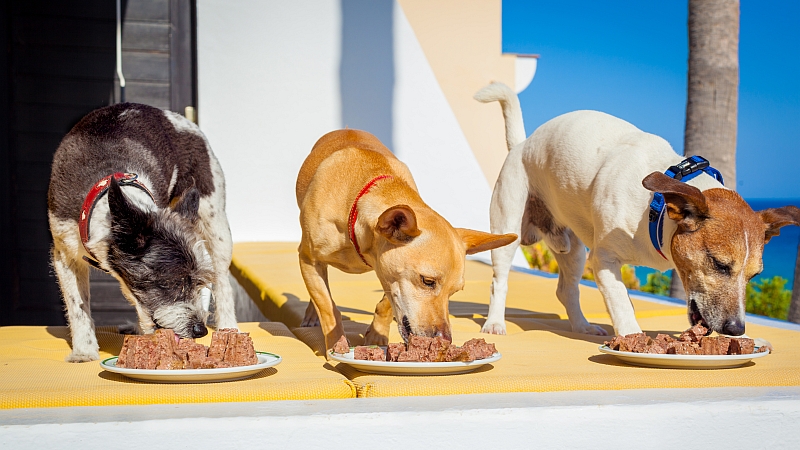Depending on the age and life stage of a dog, it will need different amounts of nutrients, especially crude proteins and fats. The amount of energy a dog needs depends on four major areas of caloric consumption: time of growth, the period during which they are pregnant, and lactating, as well as their daily level of exercise. The fuel for these four categories should mainly be comprised of proteins, fats, and carbohydrates.
Unlike cats, since dogs are omnivores, they can get a portion of their caloric needs through the consumption of carbohydrates, sugars, starches, and fibers; however, these food components should be limited, as a healthy canine should get most of its energy from proteins and fats.
Of course, the size of your dog will also dictate the number of calories required for a healthy life. Each dog food has a different combination of ingredients, and consequently calories per serving, so it is important to read the portion recommendations from the dog food manufacturer which is usually based on the weight-category of the dog.
Pregnant and dogs that are nursing require a lot more calories in order to be able to keep healthy, and be able to provide the necessary nutrients to their young. Ideally, you should check with your veterinarian and get a customized feeding recommendation.
Life Stages
At different life stages, dogs require a certain range of energy.
Puppies: It is generally recommended that a growing puppy receive around 1,000 calories per day, most of which should come from proteins and fats.
Young Adult Dogs (Active): Depending on the size of the dog, a young adult may need between 400 and 2,500 calories per day.
Adult Dogs (Active): Dogs that are passed the young adulthood stage require slightly less calories than their younger counterparts.
Older Dogs (Active): Older dogs that live an active life (appropriate for their health) generally require about 20% fewer calories than adult dogs.
Inactive Dogs: Dogs that have little or no opportunity to exercise, either inside or outside the home, have very little caloric requirements, and may need as little as 30-40% fewer calories than equally aged and sized active dogs.
Pregnant Dogs: Pregnant dogs have the highest caloric needs compared to any other life stage other than nursing dogs. They need as much as 30% more calories for a healthy pregnancy.
Nursing Dogs: Depending on the size of the dog, the number of weeks of nursing, and the number of puppies a nursing dog’s caloric needs will vary greatly. It is highly recommended that a veterinarian be consulted to determine the needs of a nursing dog.
In addition to protein, and fat, dogs also have the need for a select group of vitamins and minerals, the most important of which are: vitamin K, Thiamin, Riboflavin, vitamin B6, Niacin, vitamin B12, folic acid, choline, calcium, phosphorus, magnesium, sodium, potassium, chlorine, iron, copper, zinc, manganese, selenium, and iodine.
An easy way to tell whether your dog is the right weight is by feeling for its ribs. If you can clearly see the ribs, then your dog is underweight. If you can feel, but not see the ribs, then your dog is at the right weight. If you cannot feel the ribs, then your dog is clearly overweight.

